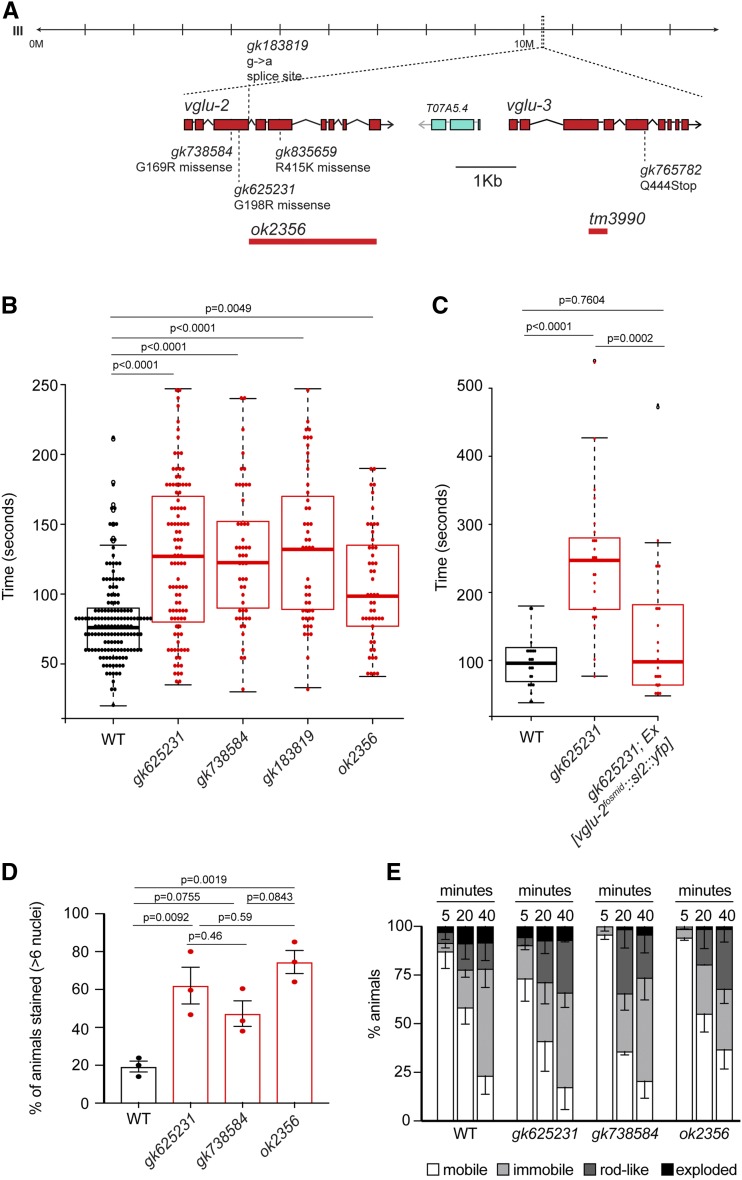Figure 6.
Cuticle defects in vglu-2 mutants. (A) Genomic locus of vglu-2 and vglu-3 including analyzed mutant alleles. (B) vglu-2 mutant cuticle is more resistant to alkaline bleach-mediated disintegration. The graphs indicate the time (seconds) for cuticle disintegration in alkaline bleach, scored for the first major break in the worm cuticle. (C) The higher resistance to alkaline bleach treatment was rescued in vglu-2(gk625231) mutants injected with the vglu-2 fosmid. For (B, C), statistical significance was determined using the Kruskal–Wallis test followed by Dunn’s test for multiple comparisons. No statistically significant changes (P > 0.05) between the different vglu-2 mutants were detected. (D) vglu-2 mutants display cuticle barrier defects. Values are displayed as mean ± SEM from three independent experiments (each represented as one data point; n = 50 per experiment and genotype). For all assays, statistical significance was determined using one-way ANOVA followed by a post hoc Tukey test for multiple comparisons. No statistically significant changes (P > 0.05) between the different vglu-2 mutants were detected. (E) Hypoosmotic sensitivity is unaffected in vglu-2 mutants. The behavior of 2-day old animals was scored as “mobile” (white), “immobile” (light gray), “rod-like” (dark gray), or “exploded” (black), 5, 20, and 40 min following their transfer to distilled water. For each time point, the percentage of animals in each of these states is expressed as mean ± SEM from three independent experiments. WT, wild-type.

